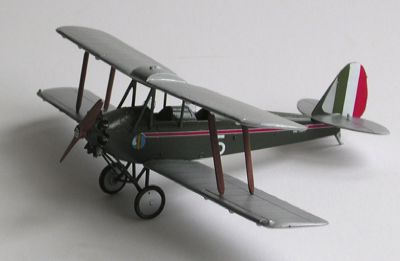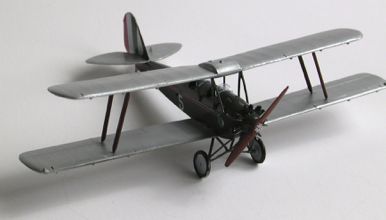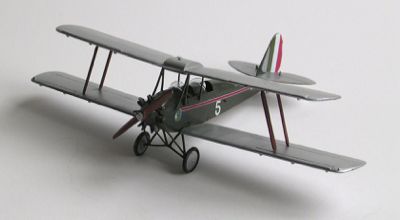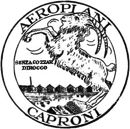Originally built for SAMI and appeared in the October 2004 issue.
Choroszy Modelbud 1/72 Caproni Ca.100 Fiat A.50 engine.
The Kit.
The kit is supplied in Modelbud's generic blue and white box, the actual kit contents denoted by a colour laser profile of the aircraft glued separately on the top lid. Upon opening the box, its contents are somewhat lost in the space, all neatly packaged in small plastic bags. As expected, this diminutive kit is beautifully cast, all pieces made entirely in resin with only a tiny number of air bubbles present. An added bonus is the appearance of alignment pins, an uncommon sight in resin kits. A small, somewhat thick, clear sheet is supplied from which to cut the cockpit windshields and there is a very nicely printed decal sheet that provides markings for two aircraft.
Instructions.
The instruction sheet is printed in black and white, carried over two sheets of folded A4 paper. It includes a brief history and what turned to be somewhat incorrect technical information, an assembly sequence that is not abundantly clear, a useful three view diagram and a markings diagram that, due to poor printing, fails to give clear tonal differences between some of the colours used on each scheme. The diagram for Italian scheme also shows the wrong type of fuselage cheat line. Fortunately the box top illustration and decal sheet does have the correct style.
Construction.
After tidying up the main pieces (wings, fuselage etc), I like to attach the plethora of small parts, still on their casting blocks, to strips of double sided tape applied to a cardboard sheet. This allows me to easily prime and paint them accordingly, thus reducing the risk of losing them during the construction process. The cockpit detail is nicely done and fits nicely between the two fuselage halves. No cockpit colours are given, but a good guess would be a light grey overall, with various detail picked out in black and silver. The undercarriage structure and central wing to fuselage struts are glued in place, after their lengths were corrected using the three-view as a guide. The fuselage is then given an overall coat of Xtracolor X109 Marine Corps Green, being a close match to the Olive Green. Most, if not all, photos of the Ca100 show that the main wheels should be spoked, not solid as supplied, but that did detract too much. Choroszy are unlikely to supply a photo-etch for just the spokes. The radial engine is quite well moulded, as is the propellor, although there is no sign of the exhaust stubs indicated on the instruction sheet. The engine, propellor and front fuselage assembly is then glued in place, followed by the cockpit windshields, which were cut from a mineral water bottle. The sheet stock supplied was much too thick in my view. At last, the wings, tail surfaces and tail skid, having previously been given a coat of Alclad 2 White Aluminium, can be installed, followed by the outer struts, painted with a wood effect and carefully trimmed to fit. Having ensured all strut lengths were accurate in both length and position, there were no problems with the alignment of the wings.
Accuracy.
The incorrect (and incomplete) dimensions on the sheet are as follows. Span: 8.10m, length ?.3 and a height of 2.73m. The kit scales out to a 10m span, 7.13m length and height of 2.66m. Using other more reliable sources, the kit is actually spot-on for span and height, but slightly over on the length (about 2mm). The kit perfectly captures the look of this aircraft.
Colour Options.
Two schemes are provided on the decal sheet, the first choice is for an Austrian civilian aircraft with silver doped wings and an attractive burgundy coloured fuselage. My choice was the Italian militarised trainer aircraft, still with silver doped wings, and an olive green fuselage complete with a red stripe.
Decals.
A very nicely printed sheet that was no problem to apply, apart from the red stripes. These will need care to avoid breaking up when dipped in water. 9/10
Conclusion/ Recommendation.
A logical addition to Modelbuds catalogue, being based on their earlier Colombo engined release. As nearly all Choroszy kits are usually of a very high standard, this one certainly does not disappoint. With its rather unusual wing arrangement (a Caproni trademark) and a lineage that can be traced to the de Havilland DH.60 Cirrus Moth, it will add interest to most biplane collections. Its relative ease of construction, especially with the use of alignment pins, should entice injection kit builders to have a go as well. The only element that lets the whole package down is the rather poorly executed instruction sheet. It goes without saying that this model is highly recommended to all biplane and Italian aircraft modellers alike.
Many thanks to Choroszy Modelbud for the review sample.




